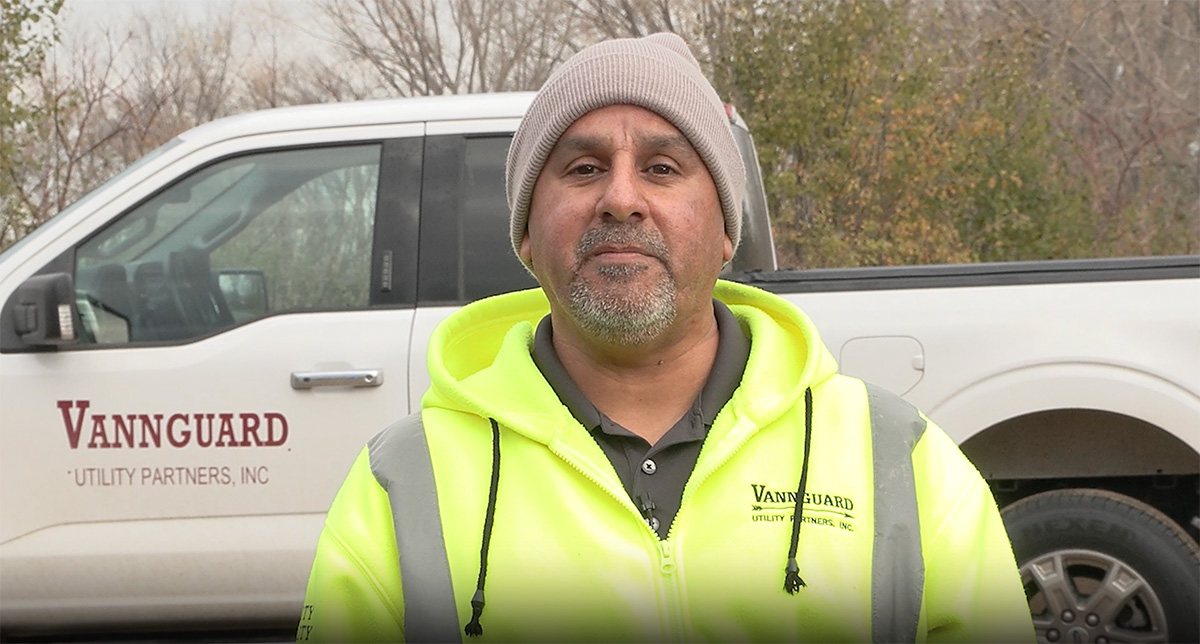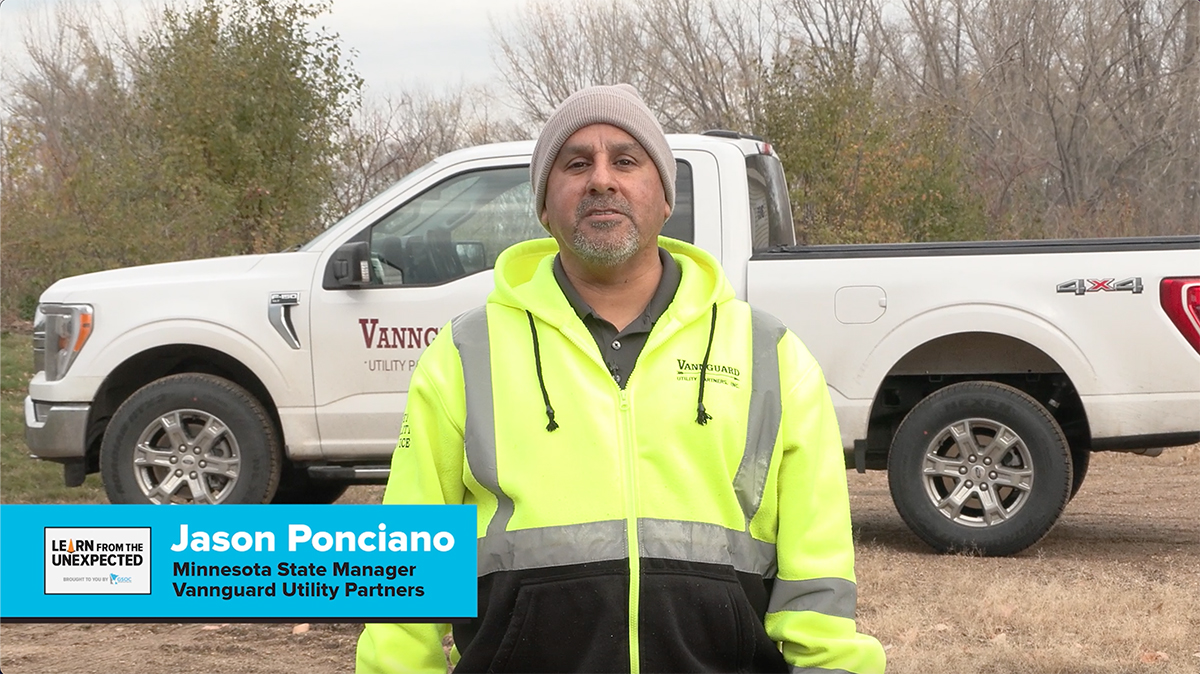
In Minnesota, it’s a requirement for anyone looking to excavate – whether a professional landscaper or other contractor, homeowner, or anyone else – to “white line” or “white mark” their excavation site with paint or flags as part of the locate request submission process. By clearly identifying the dig site, white lining reduces potential confusion and helps locators do their jobs as efficiently as possible, ensuring you’re set up for a safe and smooth project.
Jason Ponciano, Minnesota state manager for Vannguard Utility Partners, has been spent over 25 years in the locating industry and served several states. Locators play an essential role in preventing damages to underground utilities by responding to locate requests submitted through Gopher State One Call (GSOC), going out to the dig site, and marking the approximate location of buried facilities so that the excavator can approach the project safely. We’ve asked Jason to help answer some common questions about white lining and how it impacts digging projects. Keep reading to learn more about this important step in the 811 process.
Q: Whose responsibility is It to white line?
Jason: The professional contractor or homeowner.
Q: At what point in your digging project should you white line?
Jason: The white lining should be done prior to submitting the Gopher State One Call ticket.
Q: What’s the difference between physical white lining and electronic white marking?
Jason: Physical white lining would be done out in the field by putting white paint or white flags in the ground. Virtual white lining (also called electronic or digital white marking) would be done by going to Gopher State One Call's website, where you would draw the virtual white lining on a map that would then be provided to the utility companies to indicate where you're going to be digging.
See below for more information about coming changes to the requirement of physical and electric white marking.
Q: Why is white lining important?
Jason: White lining is important in preventing damages because it indicates where you – the contractor or the homeowner – will be digging. This helps the locating companies or utility companies understand exactly where the digging is taking place and not have to try to go out and guess where the digging will be done.
Q: What happens if you don’t white line before submitting your locate request?
Jason: It can cause a big impact. Lots of phone calls may need to be made to try to find out where the contractor or homeowner is going to be digging. This could then delay the locates.
Q: What if the dig site is too big to white line it?
Jason: If it’s a big project, such as an acre, which is 75 percent of a football field – that’s a big construction area. You may want to submit a Meet Ticket (also known as a “Meet Notification”) instead. You can then meet the locators on site to give them defined marking instructions.
Effective August 1, 2024, locate requests that involve excavation of one mile or more require submitting a Meet Ticket. Click here to view the updated Meet Documentation Form for more information.
Curious to learn more from Jason? Watch his Learn From the Unexpected video at LearnFromTheUnexpected.com/GSOC.
White Lining and Minnesota State Statute 216D Updates Effective August 1, 2024
Starting on January 1, 2026, electronic white marking will be available as an alternative to physical marks if they provide the same level of information. Until then, physical marks at the dig site are required and electric white marking is encouraged as an extra form of clarification. Even after this change occurs, a utility operator may request that the excavator provide physical markings.
Effective August 1, 2024, black markings may be used on site during wintery conditions.
These updates are part of the changes to Minnesota State Statute 216D, which went into effect on August 1, 2024. Click here to learn more about these changes from the Minnesota Department of Public Safety Office of Pipeline Safety (MNOPS).
Submitting a locate request with GSOC is free and easy! Click here to get started.

